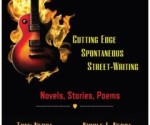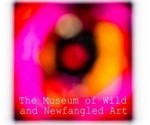We talk with Dr. Roberta J.M. Olson, curator of drawings at the New York Historical Society
 The New York Historical Society holds one of the worlds greatest documentations of the Audubon’s work that includes 435 watercolors of Natural History. According to the Museum for the nineteenth-century, The Historical Society was the great wunderkammer-room of wonders-for artworks, historical artifacts and curiosities founded in 1804.
The New York Historical Society holds one of the worlds greatest documentations of the Audubon’s work that includes 435 watercolors of Natural History. According to the Museum for the nineteenth-century, The Historical Society was the great wunderkammer-room of wonders-for artworks, historical artifacts and curiosities founded in 1804.
In the latest book out by Olson called Audubon’s Aviary: The Original Watercolors for The Birds of America, 474 one-of-a-kind images can be seen as well as the exhibit itself.
“I am persuaded that alone in the woods, or at my work, I can make a better use of myself than in any other situation, and that thereby I have lost nothing in exchanging the pleasure of studying men for that of admiring the feathered race” -John J. Audubon
Your latest exhibit is indeed the Swan Song of Audubon’s Masterpieces as you say, what was your experience like putting this show together and this amazing book you wrote?
It has been my privilege and an amazing adventure to work with Audubon’s watercolors, both avian and mammal, since coming to the NYHS as Curator of Drawings in 2000. They have been under my wing, so to speak, through a grant from the Getty Foundation, which enabled us to catalogue and study all of the drawings in the N-YHS collection. I have curated now 10 major exhibitions of watercolors by Audubon and countless thematic mini-exhibitions. Throughout this trajectory I have continued to study them, and since Audubon is such a complex, magical artist, I have always experienced new revelations. It has been a joyful, exciting voyage of discovery indeed, and continues to be. Some of these are published in articles, like the Master Drawings attached and Audubon’s Aviary: The Original Watercolors for The Birds of America. That said, “The Complete Flock” triology has been a once-in-a-lifetime opportunity to present to the public for the first time the watercolor models for Havell’s plates of The Birds of America hung in the order they were engraved and the order that Audubon’s subscribers received them.
The American Flamingo seems like an interesting species and it seemed as though Audubon had to take on a different painting technique, why?
In 1832, Audubon spotted several flocks of flamingos in the Florida Keys and was keen to obtain a specimen. Unsuccessful, he wrote several times from London to the Reverend John Bachman in Charleston, South Carolina, impatiently requesting one. He finally obtained specimens from Cuba—one that was dried and two preserved in spirits—for this watercolor. His use of specimens as models can be seen in the stiff-looking wing that stands outside the body plumage and contrasts with the one almost hidden by the ornamental scapular feathers and the black primaries.
This iconic image has been termed, like the watercolors for The Birds of America in aggregate, a national treasure. It represents one of the four species of flamingos native to the Americas. JJA manipulated the pose of this large bird to fit into the confines of the double-elephant-size paper. Condensing the bird’s physical characteristics, he seems to have captured all of its potential postures and movements in one pose, like one frame of a movie that magically suggests the entire film.
Audubon did something no other artist was able to do at that time, explain his process?
While many of Audubon’s ornithological predecessors were mesmerized by this exotic species, which suggests that anything is possible in America, only two of them had selected a similar posture, in which the bird bends over to feed, care for its young, and walk. But only Audubon made the bird appear to move. He successfully conveys the forward motion, seemingly beyond the left border of the page, an illusion he may have learned from paintings of the Baroque period. Pentimenti near the flamingo’s left foot demonstrate that he contemplated placing it in an even more forward position.
To create this amazing image Audubon applied watercolor in the traditional manner, in layers of thin washes of color, which appear under magnification as overlapping tidal edges; he sometimes added gouache and pastel (in the legs). At other times, however, he mixed his pigment with glaze for denser, more sensuous effects and also applied pigment with smaller strokes to create surface texture and the illusion of volume. To render the brilliant pinks that flamingos acquire from the carotenoid proteins in their diet of plankton, Audubon built up many layers of media and glazing, a technique more common with oil pigment. This technique has caused the paint to crack over time.
The Falcon has always intrigued me because of its close ties to Royalty during Medieval times, for example the Gyrfalcon was used for hunting, can you tell me more about this bird and how Audubon captured it in his work?
Considered by many people as the most splendorous bird of prey, “this superb Falcon” is indeed the largest of all falcons in the world with a wingspan of forty-eight to sixty-four inches. During medieval times royalty alone could use the Gyrfalcon for hunting. These rare birds live farther north than any other members of the falcon family and breed on the Arctic tundra, which explains their white plumage. They range in color from largely white to entirely dark, depending on their habitat and the season.
During the 1833 Labrador expedition, John Woodhouse Audubon and two friends shot male and female dark-phase Gyrfalcons and brought them back to their boat, the Ripley, for his father to draw. They were the first of this species that JJA had ever seen, and he struggled, despite heavy rain, for seventeen concentrated hours to depict them on board ship.
Four years later in England, he executed this watercolor of two savage-looking, white-phase Gyrfalcons from a single female bird that he had observed only in captivity, placing them in a stark habitat in relief against the dark blue sky to make them pop. Since the sexes have essentially the same plumage, the only significant difference between them is the larger size of the female. According to John Heppenstall of Sheffield, who had kept this bird for over five years, Audubon and Lucy had visited him while it was alive, but because Audubon had an injured finger, he could not draw it. After it contracted an infection of the esophagus and died, Heppenstall immediately sent the specimen to him to draw. “[A]fter having received it in good condition, I was enabled not only to make it the subject of the present plate, and to take accurate measurement of all its parts, but also to institute a comparison between it and one of the specimens obtained in Labrador. . . .”
For more information on Dr. Roberta J.M. Olson and the New York Historical Society, please visit http://www.nyhistory.org










